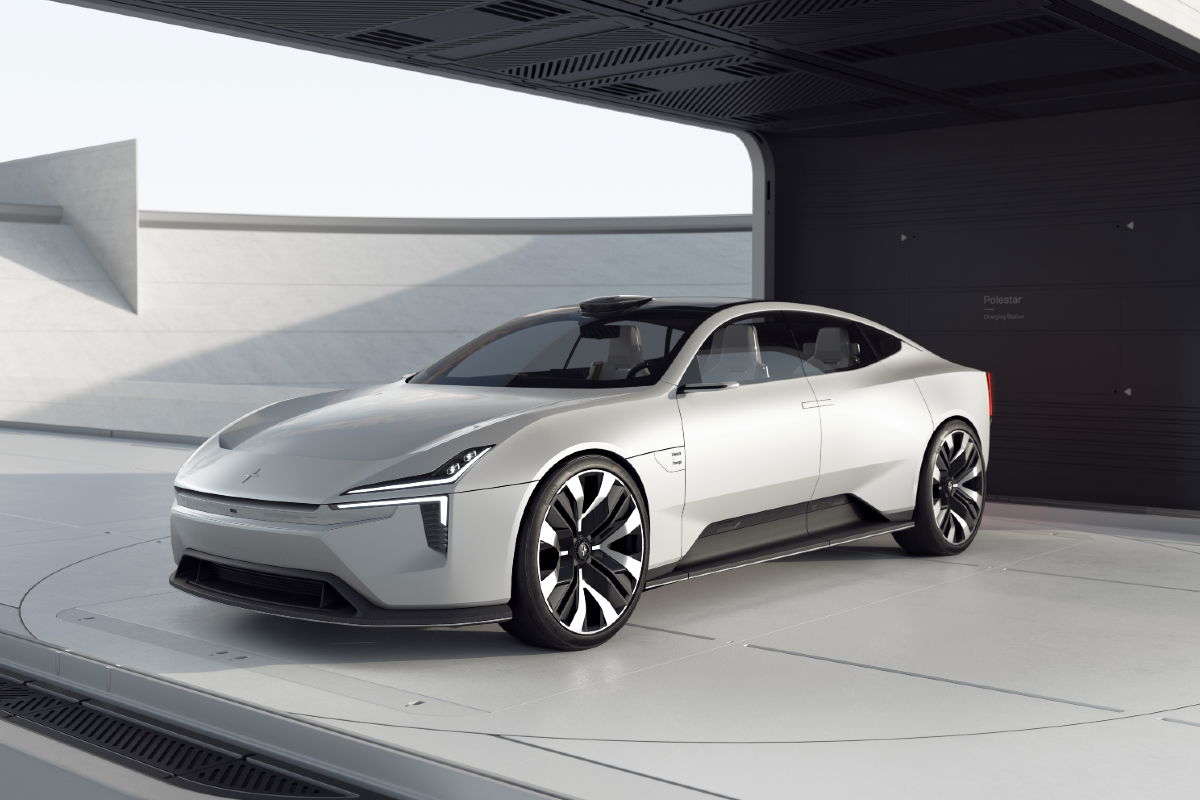
Polestar has revealed its future, a new range of performance electric vehicles that take aim directly at Porsche – and Australia will be included as a key market.
The former Volvo performance sub-brand was spun-off as a standalone car maker in 2019 when it released the Polestar 1 coupe. Now it has announced plans to become a publicly listed company and to entice shareholders has revealed details about its future plans and line-up.
The Polestar 2 – a high-riding sedan based on the same underpinnings as the electric Volvo XC40 Recharge – is expected to arrive in Australia in the coming months. The Polestar 1 was only built in left-hand drive so will not be sold locally.
That’s not likely to be the case for the rest of the expanded range, which will include the (creatively named) Polestar 3, Polestar 4 and Polestar 5 models by 2024. That’s because Australia is listed as a key expansion market for the brand, as is the United Kingdom. This means all future models are all-but-certain to be built in right-hand drive.

The first new model will be the Polestar 3, a “Luxury Aero SUV” targeting the Porsche Cayenne. Next will be the Polestar 4 in 2024, which the company has labelled a “Premium Sport SUV”, that will compete against the Porsche Macan. Finally, for now at least, is the Polestar 5 arriving in 2024. This will be a “Luxury Sport GT 4-door” that will try and rival the Porsche Panamera.
The Polestar 5 will be the production version of the brand’s Precept concept, first unveiled in March 2020. At its reveal Polestar called it a “manifesto of things to come” and that has played out.
The Precept featured a range of new elements that will become pillars of Polestar’s design and technology for all new models. One of the best examples of this is the front end design, where beneath the “Thor’s hammer” headlights the front grille has become the “SmartZone” – with the traditional radiator area replaced with all the radar and sensors it needs for its advanced safety systems.
Other Precept elements that the company is indicating will make it to production include the huge glass roof that extends beyond the cabin and the rear window is replaced by a live camera system to allow for more luggage room.

The company has also detailed plans for what will be underneath its unique bodies. As part of the Chinese-owned Geely group, Polestar will be able to take advantage of the electric motors and batteries being developed for future Volvo and Lotus models. According to the company’s presentation to would-be shareholders the Polestar range will use a 450kW motor with the option to boost total output to 650kW with a dual-motor set-up.
The battery packs will be switchable between 400-volt and 800-volts depending on what charging infrastructure is available. Crucially the batteries will be bi-directional, so they will be able to push electricity into the grid, which could allow owners to save – or potentially make – money by charging off-peak.
Despite its Swedish roots Polestar will produce the majority of its cars in China, with the Polestar 3 also being built at a Volvo-owned factory in the USA.
Polestar Australia has confirmed when the expanded line-up will be available locally, with its focus currently on the impending introduction of the Polestar 2.













Discussion about this post